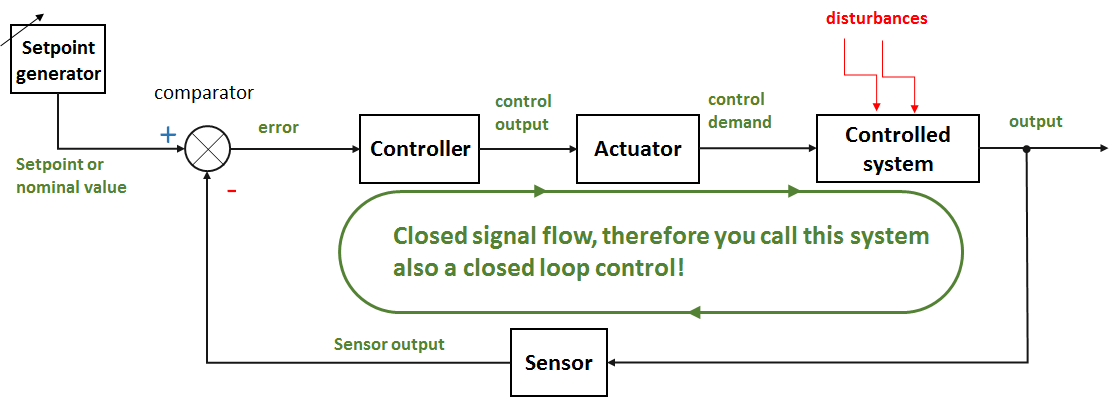English
Deutsch
Português
Español
- Closed Loop Controls
Home ⇒ Overview Courses ⇒ Closed Loop Controls
What´s the difference between opened and closed loop control?
The signal flow of an opened loop control has an start point and an end point. Therefore you also name this as an opened loop control. The problem is hereby: This control cannot react to disturbances.

Block diagram of an opened loop control
In order to reach the desired position safely despite of disturbing influences, the circuit has to be complemented to a closed loop control. Which further components you need?
The block diagram of a closed-loop control in general can now completed:

Block diagram and function of a closed loop control
The components of a Closed-Loop system briefly explained:
Sensor - measures the controlled variable at the output of the controlled system and sends its value to the comparator in the form of an electrical signal. Thus, the sensor closes the control loop.
Comparator - compares the reference value with the sensor value and generates an error signal indicating how much the output signal deviates from the input signal.
Controller - determines the action to take based on the error sent by the comparator.
Actuator - receives a signal from the controller and acts on the manipulated variable (in our example, the air pressure). This is because the controller only sends an electrical signal and cannot act directly on the controlled system.
Controlled system - is the system in which the actual variable (here pressure) is formed.

